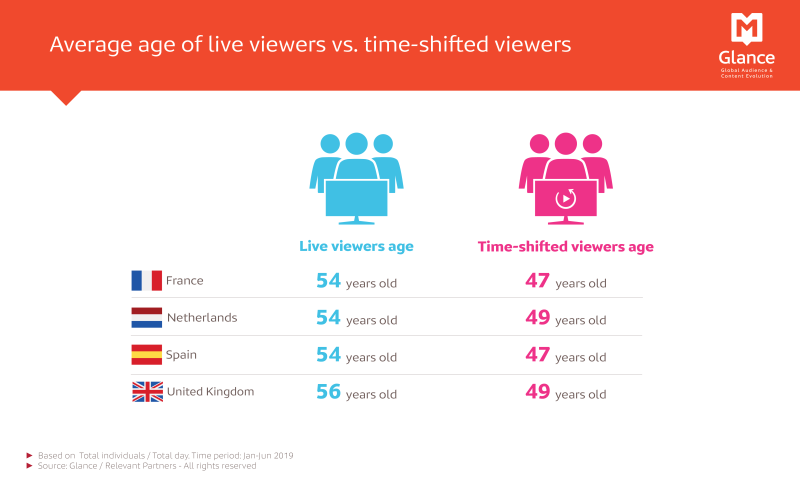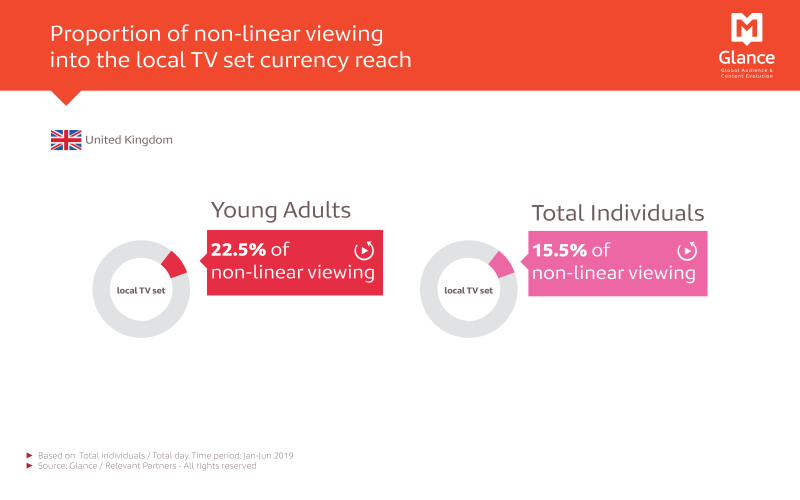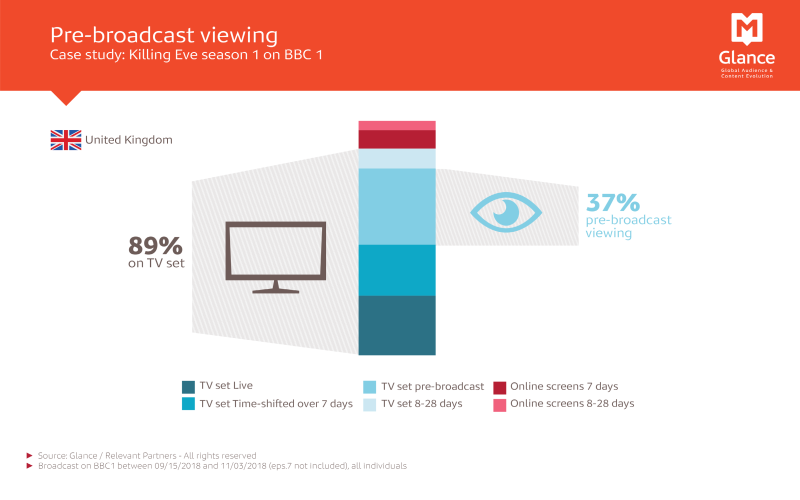Is time-shifted viewing only dedicated to young adults?
With the development of SVOD players, these new methods of watching TV still raise questions for media stakeholders. Is non-linear viewing a niche consumption? Do SVODs only target digital millennials, or are they part of a global trend that reaches the whole population?
Historically, non-linear viewing was essentially what we now call time-shifted viewing: the ability to watch a programme after a live broadcast.
This TV viewing trend has become mainstream, and so too has our measurement of it. Most countries’ measurements use time-shifted viewing as standard, and 40 countries include it as a part of their currency as of 2018.
Through this measurement, we can compare the average age of live viewers to the average age of time-shifted viewers.

The average ages of traditional live viewers do not vary much between the four countries. However, the ages of the time-shifted viewers are younger than live viewers in all the studied countries by around 7 years. This fits with the idea that millennials are the ones driving the development of this new trend, and therefore programmes skewed towards younger audiences benefit from this trend the most.
Although it is younger, the average age for time-shifted viewers is almost 50 years old, way older than the definition of a millennial: between 15-35 years old.
As for time shifted viewing, there is a larger, older population who watch TV as a time-shifted audience in the UK and the Netherlands than in France and Spain. This non-linear viewing into the local TV set currency reaches up to 22.5% of the TV set audience for the Young Adults in the UK and 15.5% for the Total Individuals.

Combined, these trends indicate that non-linear viewing has become a habit amongst all age groups. As a result, nonlinear programming doesn’t need to be tailored to young viewers, but rather can be used to prevent the global TV audience from ageing and becoming homogenous.Time-shifted viewing continues to develop, and young adults consume time-shifted viewing at the same rate as the population overall. In addition to time-shifted viewing, a new non-linear alternative is surfacing. This is pre-broadcast viewing, the online viewing of a programme both before and after its live broadcast. At the moment only two countries measure it – the UK by programme, and France by channel – but it’s proving to be a very successful tactic. In the case of Killing Eve, pre-broadcast viewing accounted for 37% of the first season’s success.

Considering this, we can be confident in believing that the increasing proportion of non-linear viewing will continue to grow over the next few years among the whole population.
Test of significance of the differences between two proportions
Used to assess whether the difference between 2 proportions is significant at the 95% threshold
Warning: only applies to a proportion. The Average Rate is an average of proportions and the Audience Share a ratio of proportions. This tool is provided for information purposes. It cannot be applied for professional purposes without further precautions.
des médias
edition
definitions
